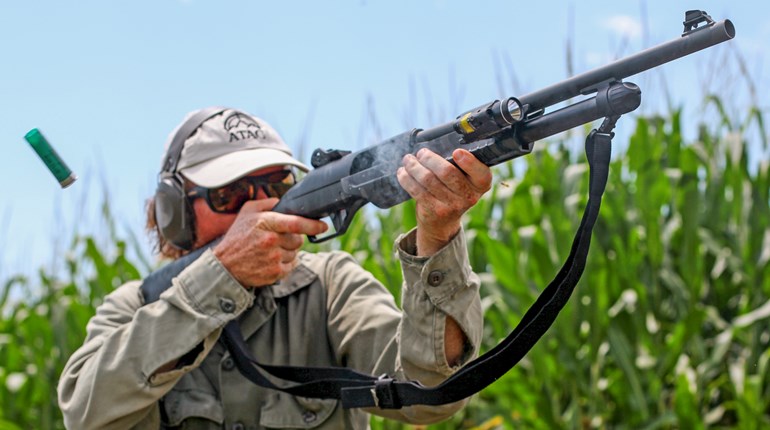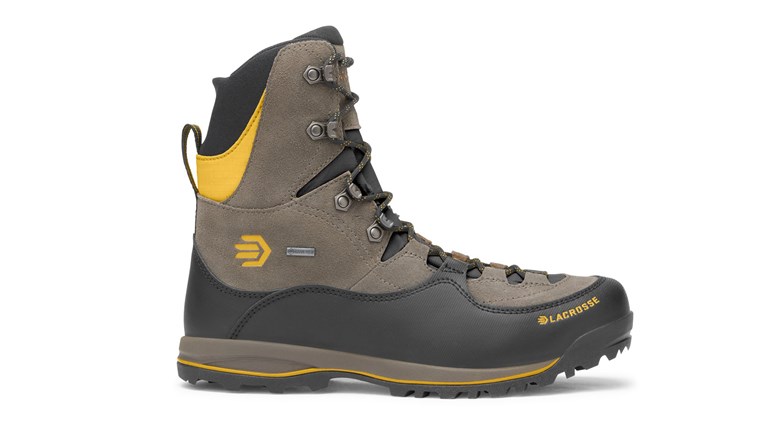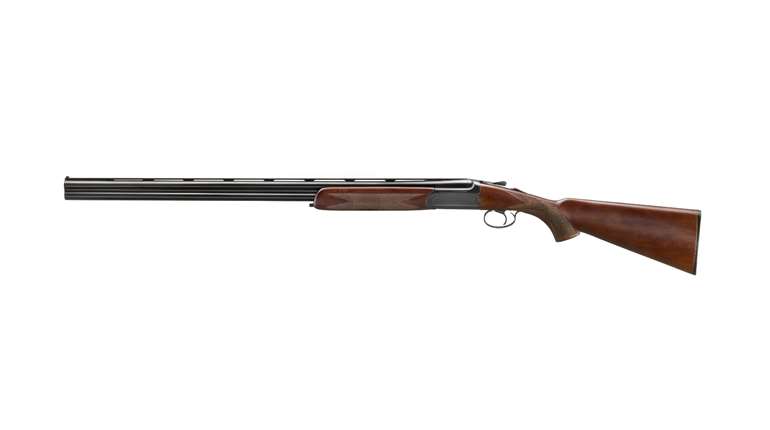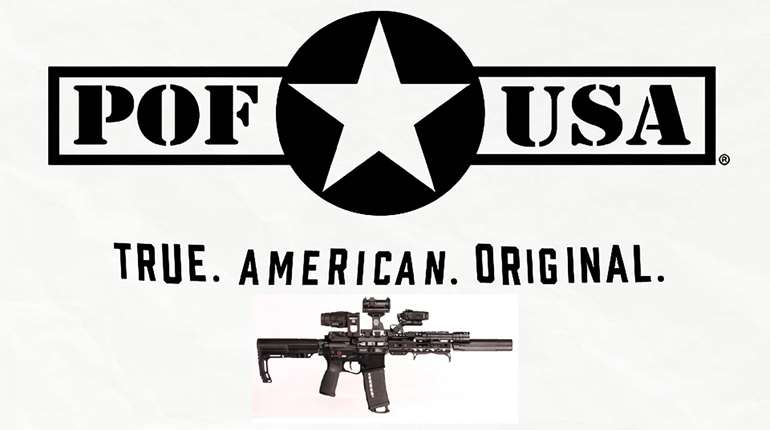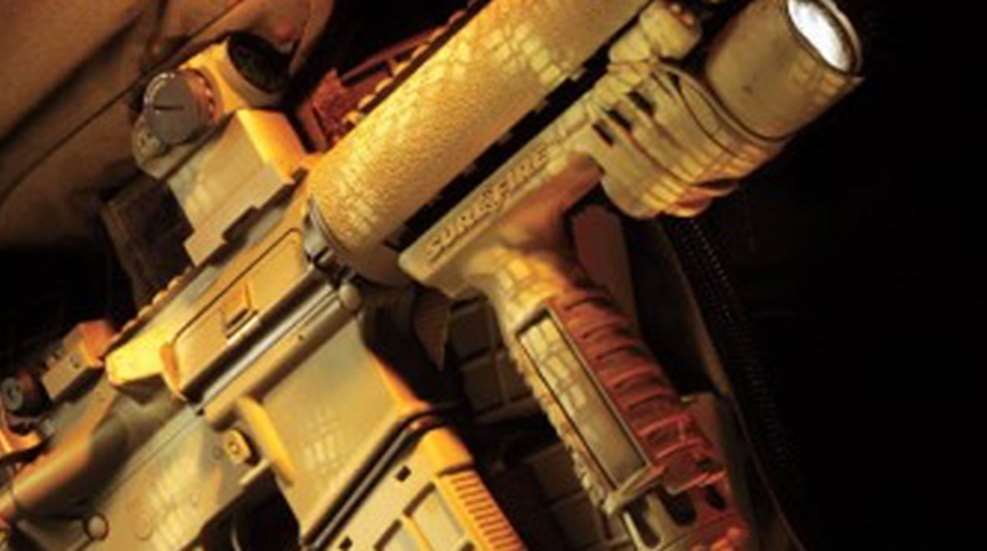
Hiding is an art. The science of disguising yourself has long been dissected and studied by military snipers, resulting in a list of everything imaginable that can give you away. It starts with a lovely alliteration of Ss: shape, shine, shadow, smell, sound and silhouette. Then you have color, movement and one that has tormented me countless times, birds.
I'm hunkered down, camouflaged like the surrounding bush with no shiny objects, not even my rifle. I'm not casting a shadow, silhouetted against the skyline or moving. But then a pesky bird flies overhead, sees me, squawks and flies away. Busted.

It just goes to prove you can't hide completely, but you can take care of the more obvious things. One of the biggest giveaways is a nice, shiny rifle and scope. Painting your rifle is an easy DIY project. Unlike glass-bedding a rifle or adjusting its trigger, spray painting a gun is virtually impossible to foul up for one simple reason: There's no such thing as a right or wrong way to paint it. As long as you don't use fluorescent pink paint, you really can't mess it up.
The necessary tools are easy and cheap: a roll of blue tape found in the paint section of Home Depot, a leafy branch for an overlay and two or three cans of camouflage spray paint. Total cost: less than $10.
The first rule is there aren't any rules. There are, however, some guidelines. The main thing to keep in mind is the purpose of camouflage is to break up an object's shape. Blending into the surroundings is primarily a matter of color, but breaking up shape is a matter of highlights and shadows, or light and dark coloration.
Your color choices are limited by what's available in spray paint. The basic colors are dark brown, tan, dark green, light green, black and a sort of primer-red color. Spray paint comes in a special "camouflage" formulation, meaning a flat-matte sheen. I've discovered another property of this spray paint that's extremely helpful—it's very fast drying. Instructions suggest 20 minutes between coats, but I've applied other colors in as little as 5 minutes.
A second guideline is to apply one, or at most two, base colors prior to accenting the pattern with an overlay—a leaf, net or a branch you hold over your rifle, perhaps 6 to 10 inches away. Spray over the blocking item to create an overlay effect.

Basically, the overlay serves as a reverse pattern—the paint goes where the overlay isn't. If it's a leafy branch, the paint covers all the gaps and holes around the leaves so the overlay's shape is not what you're spraying, but the color of the base coat underneath.
Another guiding principle that took me several attempts to learn is less is more. Go gently into that painted night. You can achieve excellent results with only two colors. If your rifle starts out in a matte-black finish, you can use the black as a third color. I've used three colors, but the only time I tried four, it was too much.
Even with a mistake like overdoing the camouflage, you can fix it all by starting from the beginning, again. This is the really great thing about spray paint—if you don't like it, wait until it dries and start over.
Being able to fix mistakes comes into its own after field use. For example, I've discovered spray paint doesn't really stick too well to scopes. For some reason, the anodized finish on aluminum scope tubes is too slick for paint to achieve a good bond. No matter. After rough use, simply touch up any scratches.
Tape It Off
Perhaps this should be obvious or maybe I should've mentioned it earlier, but the only suitable candidates for a camo paint job are black guns or synthetically stocked hunting rifles. I would never deface a marble-caked piece of Circassian walnut with spray paint, but I find no aesthetic beauty in fiberglass or plastic.
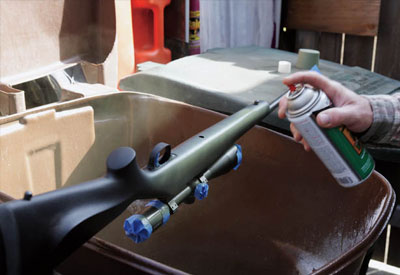
Like any painting job, the first thing is prep. You need a roll of blue tape (tape made for painters that's easily removed) available at any hardware store in the paint section. Tear off pieces of blue tape to cover whatever you don't want painted. Remove the bolt. Tape off parts vital for function to avoid potential failures to fire. Whether to tape the bolt handle or not is your choice—I've done it both ways—but have found paint wears off bolt handles pretty quickly.
Cover the ejection port where the bolt resides with blue tape, too. I often have to use several small pieces of tape to cover it, paying special attention to the chamber.
A word of warning is needed here. To cover the chamber, you'll need a small piece of tape that half blocks and half covers the chamber opening. I painted an 8 mm Rem. Mag. one time, removed all the tape, went to the range and proceeded to sight-in. Things suddenly came to a grinding halt when I couldn't close the bolt.
It wasn't until I got home that I discovered the culprit: A small piece of tape jammed up inside the chamber, preventing a cartridge from fully seating. The lesson is to carefully verify all the tape is out of the action before going to the range.
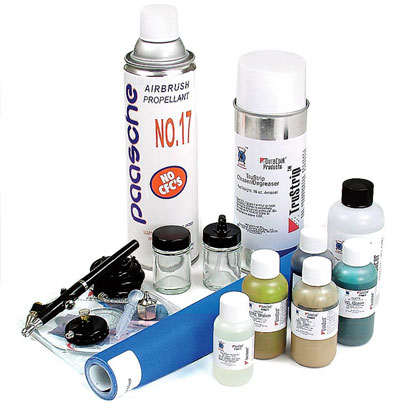
Obviously you need to tape off the lenses of your scope. I simply cover them with an oversize piece (or pieces) of tape. No need to trim them to size—just paint around the tape.
I also cover the magnification ring on the scope if it's a variable-power model. Sometimes I tape the trigger, sometimes I don't. As long as you don't get paint in the trigger mechanism (fire-control group, for you technophiles) you're OK.
I don't bother to tape off the muzzle, because if you do happen to over-spray down the bore, the first bullet will remove it. Similarly, I also don't tape off the recoil pad, but I make it a point not to spray the rifle from the end in order to avoid getting paint on a non-visible part. It's just going to rub off on my shirt, anyway.
With your rifle taped off, place it on a cradle-like support such as a pair of saw horses or over an open trash can. The idea is to hold the rifle in such a way so you can easily turn it over.
Less Is More
Remembering the maxim, apply a nice, even base coat. Brown and green are my usual base colors. I don't bother with two coats, because I'm going to add more paint anyway with the next step.
Use a leafy branch, a net, anything with holes for an overlay. Spray through it in primarily diagonal directions to break up the shape of a rifle. Use a color that contrasts with your base, like tan over green and dark brown over tan.
Accenting the camo comes next. Examine your rifle and see if there are any gaps in the paint coats. Depending on the scheme, either spray again with the base or drape your overlay and hit it again with your second color.
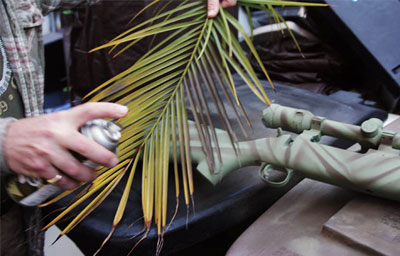
A third color is to be approached carefully. It's really easy to overdo camo if you get wild and crazy with a third color. I like to use the primer-red color as a third color, but very judiciously. Black can also be a good third option.
If you're finished and your rifle looks like a bad Salvador Dali dream, no worries. Let it dry and start over. There's no such thing as a wrong camo job.
AR Painting
Painting an AR is not much different than a bolt gun, in fact it's easier. You don't have to tape off the chamber because you can close the dustcover. The only parts I tape on an AR are the optic and front sight (paint the base, but not the post).
Remove the rear, back-up iron sight since that's easier than taping it off. That's about all the prep work you need.
For an AR with a collapsible stock, fully extend the stock so you can paint the receiver extension. I use mostly tan and dark brown on ARs, because those are the predominant colors in the Sandbox.
If your Picatinny rail fore-end uses panels from TangoDown or Knight's Armament, paint when they are on the gun to keep the pattern flowing.
I like a striated look, so I use a long palm-like leaf. Netting is also a very good overlay for an AR.
Paint doesn't last long on an AR if you shoot it a lot, but that weathered look adds to its appeal. There's nothing that screams newbie louder than a freshly painted gun, so get out there, run around, go prone, shoot a few thousand rounds, let your rifle get broken in and avoid all the comments. It's all part of the joy of painting.












